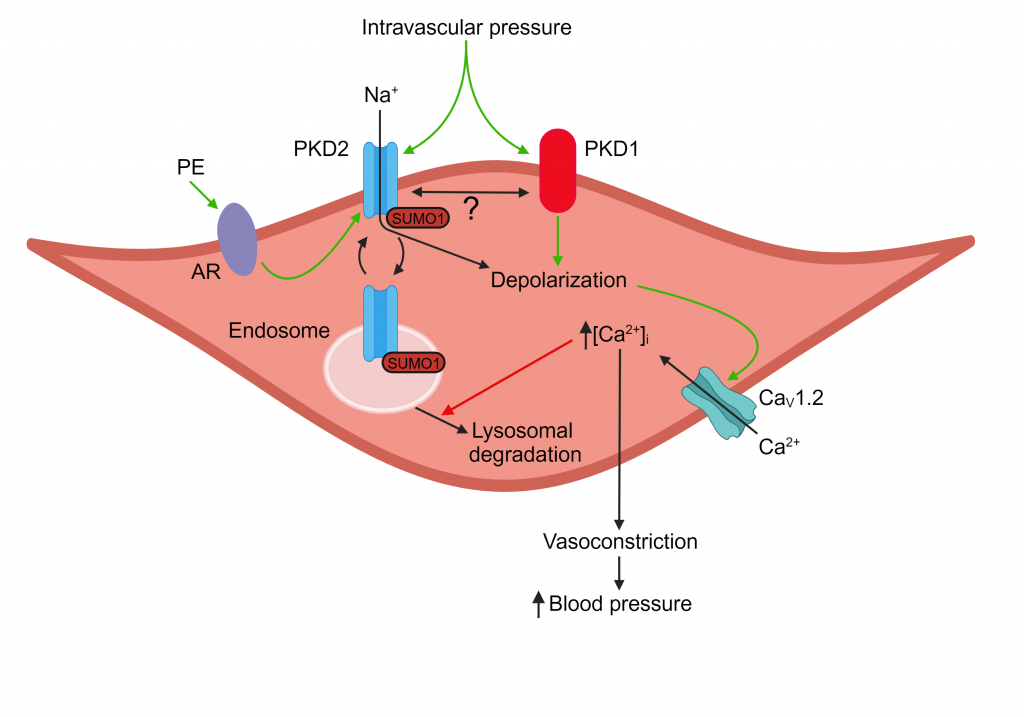Blood pressure and vascular regulation by PKD proteins
PKD1 (polycystin 1) and PKD2 (polycystin 2) are expressed in both arterial smooth muscle and endothelial cells. PKD1 is a transmembrane domain protein with a large extracellular N-terminus, whereas PKD2 is a member of the transient receptor potential (TRP) channel superfamily which is also termed TRP polycystin 1. Mutations in PKD1 and PKD2 lead to autosomal polycystic kidney disease (ADPKD), which is one of the most prevalent monogenic disorders in humans. Our recent studies have uncovered mechanisms of activation and physiological functions of PKD1 and PKD2 in arterial smooth muscle and endothelial cells, including their interdependent and independent signaling mechanisms. We have also found that PKD function is altered in the vasculature during hypertension. We continue to investigate physiological functions and pathological alterations in PKD proteins in the vasculature.
Ion channel trafficking in arterial smooth muscle and endothelial cells
Our recent studies have demonstrated that physiological stimuli can regulate the surface abundance of several different ion channels and their regulatory subunits in arterial smooth muscle and endothelial cells to control arterial contractility. We also discovered that ion channel trafficking becomes dysfunctional in the vasculature during hypertension, which negatively impacts the regulation of contractility. The speed of ion channel trafficking also depends upon the signaling mechanisms and proteins involved. We are still investigating the mechanisms, functions, and pathological modifications of ion channel trafficking in arterial smooth muscle and endothelial cells.
Chloride channels in endothelial cells
Recently, we found that TMEM16A channels are expressed in endothelial cells where they generate calcium-activated Cl– currents. We also discovered that physiological vasodilators stimulate TRPV4 channels, leading to Ca2+-dependent activation of nearby TMEM16A channels in endothelial cells to produce arterial hyperpolarization, vasodilation and a reduction in blood pressure. Thus, TMEM16A is an anion channel present in endothelial cells that regulates arterial contractility and blood pressure. We continue to study physiological functions and pathological alterations in TMEM16A channels in endothelial cells.





